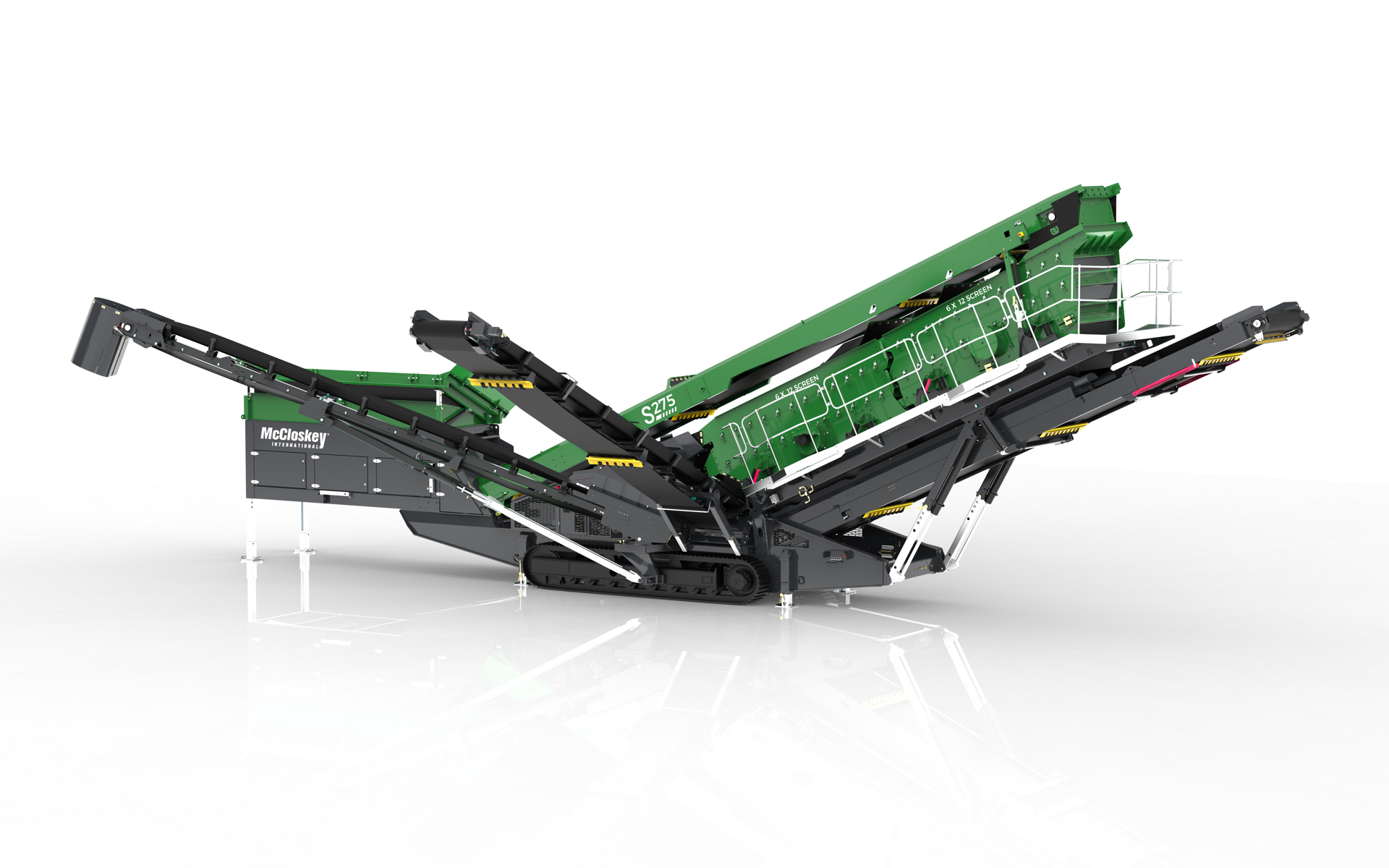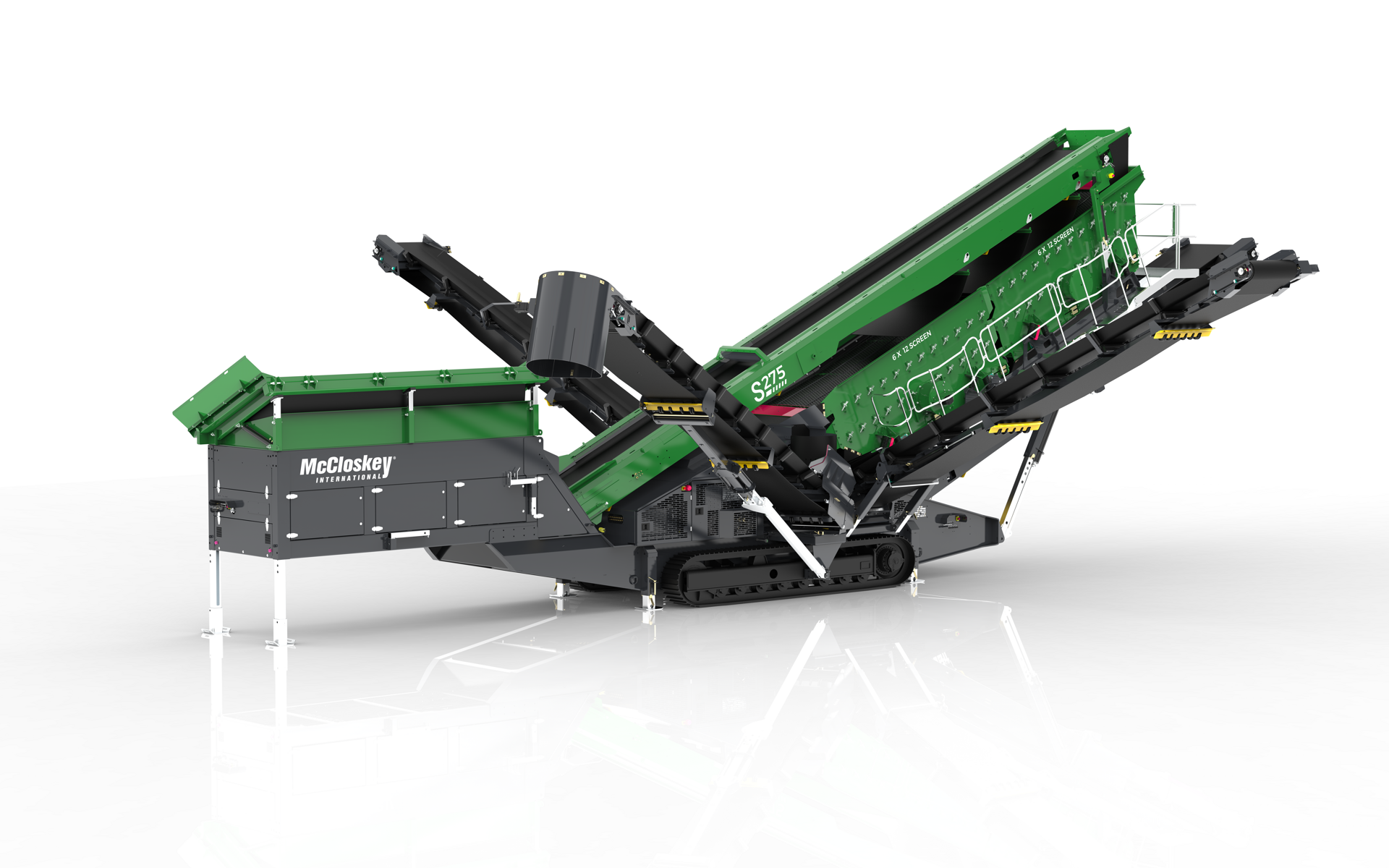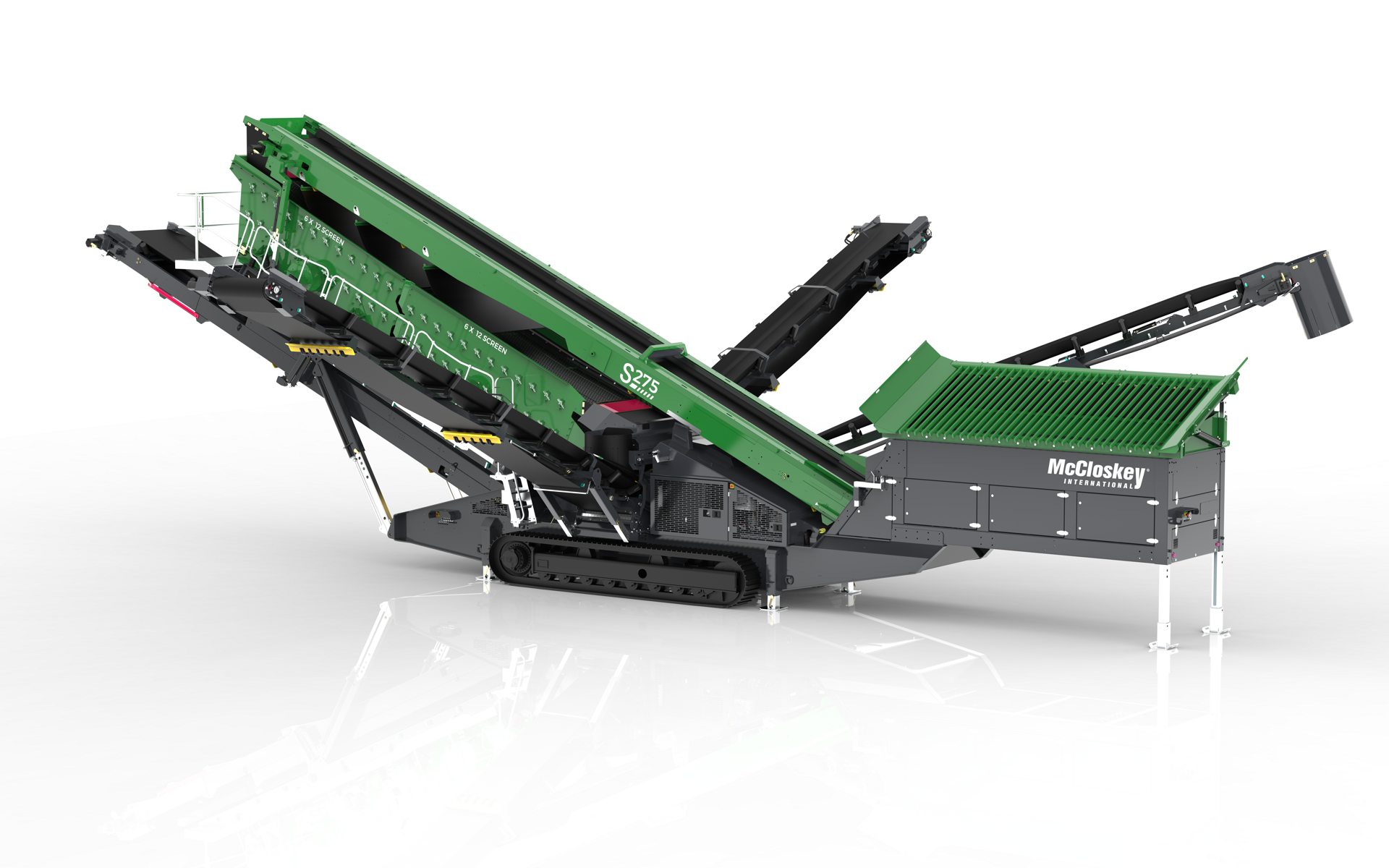McCloskey S275 Incline Screen
Applications and Performance
Ideal for:
- Quarry and high-volume aggregate screening
- Multi-grade sand, gravel, and crushed rock
- Recycling of concrete, asphalt, and C&D waste
- Soil, compost, and mulch production
- Contractors requiring maximum flexibility in material sizing
With its high energy design and massive screening surface, the S275 consistently delivers clean, spec-grade material — even at high volumes and in challenging conditions.
Why Choose the McCloskey S275?
For operators needing maximum productivity, multi-product flexibility, and industrial-grade durability, the McCloskey S275 is the ultimate mobile screening solution. Whether working standalone or as part of a crushing train, this triple-deck screener delivers top performance where precision and throughput matter most.
 Output
800TPH
Output
800TPH Engine Size
CAT C7.1 225Hp
Engine Size
CAT C7.1 225Hp Screenbox
24' x 6'
Screenbox
24' x 6' Machine Weight
42,430KG Approx
Machine Weight
42,430KG Approx




MACHINE BENEFITS
A primary crusher with superior shaping ability, the R5 Impact Crusher fills a variety of roles using just one piece of equipment. The R5’s built in pre-screen’s, post-screens and recirculation conveyor ensures maximum product quality and throughput.
A primary crusher with superior shaping ability, the R5 Impact Crusher fills a variety of roles using just one piece of equipment. The R5’s built in pre-screen’s, post-screens and recirculation conveyor ensures maximum product quality and throughput.
A primary crusher with superior shaping ability, the R5 Impact Crusher fills a variety of roles using just one piece of equipment. The R5’s built in pre-screen’s, post-screens and recirculation conveyor ensures maximum product quality and throughput.
A primary crusher with superior shaping ability, the R5 Impact Crusher fills a variety of roles using just one piece of equipment. The R5’s built in pre-screen’s, post-screens and recirculation conveyor ensures maximum product quality and throughput.
